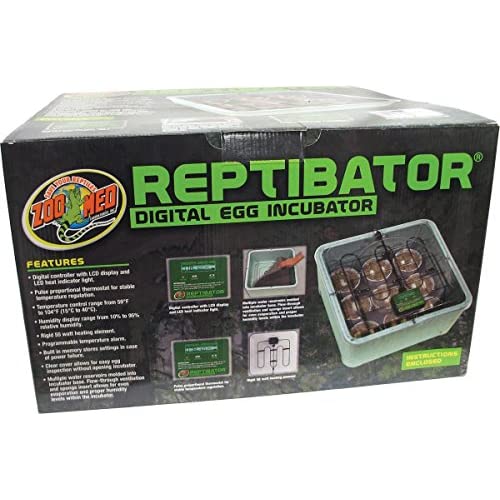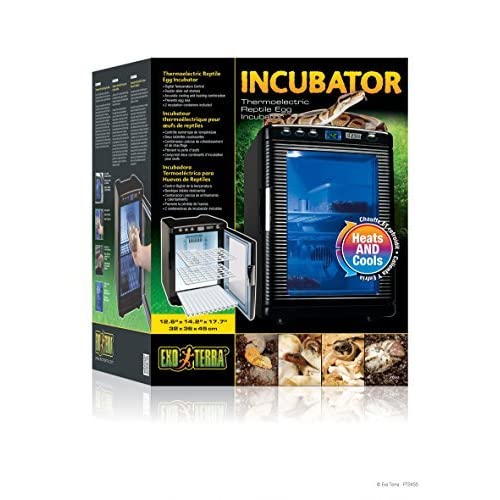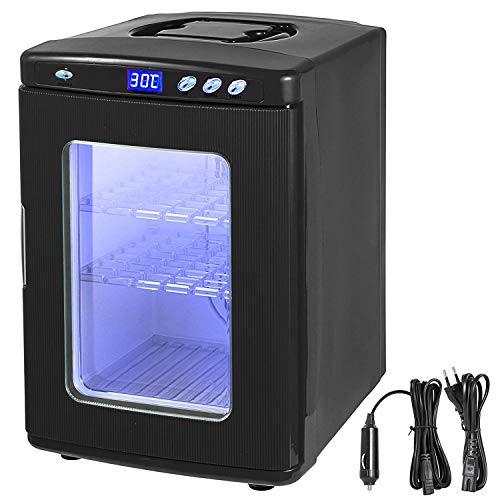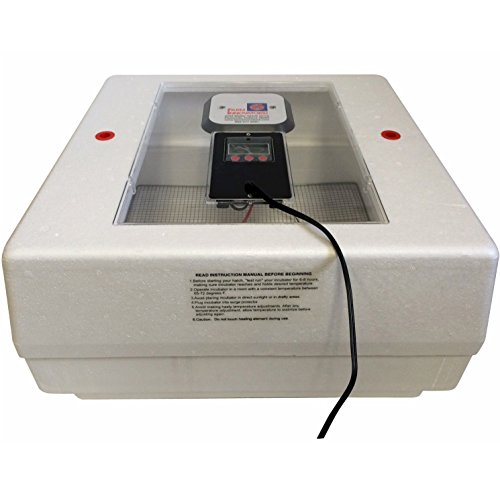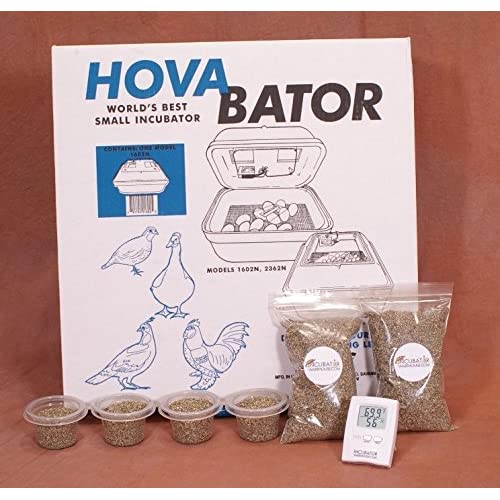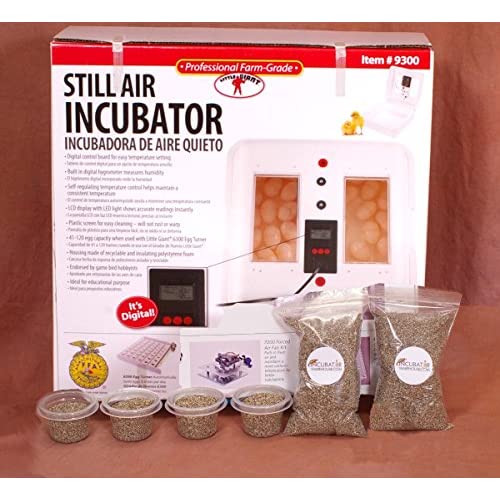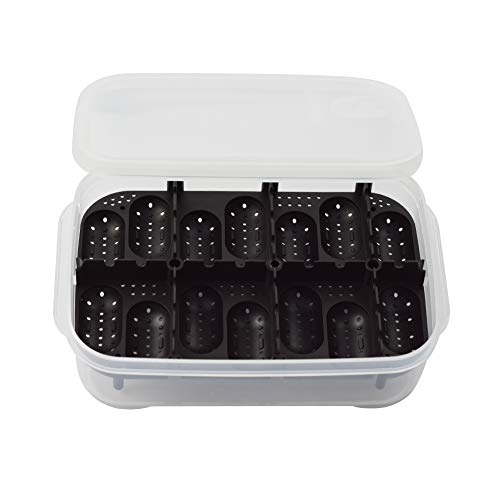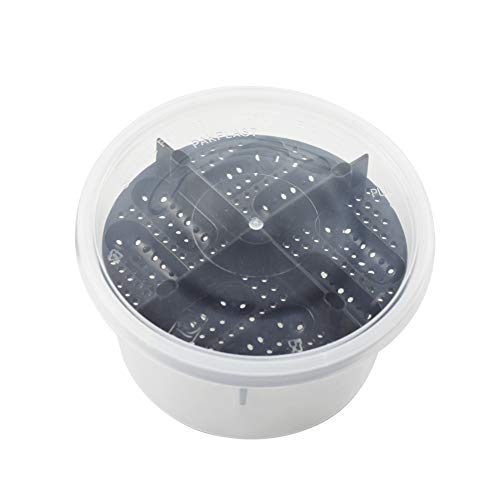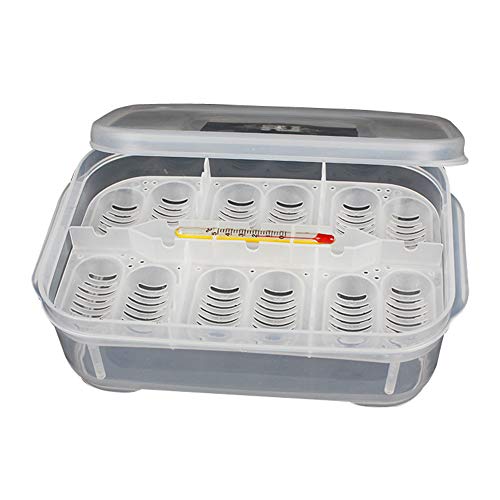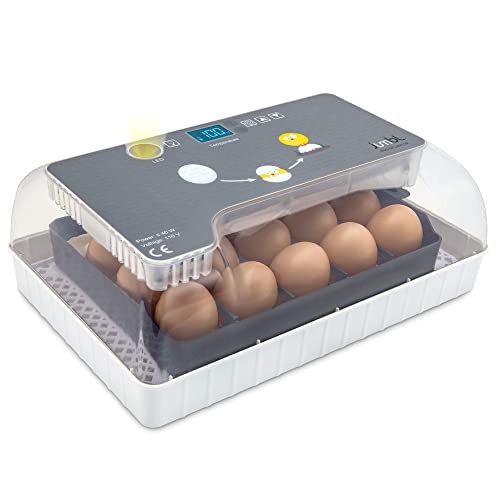If you’ve decided to breed reptiles, you need one of the best reptile incubators. Reptile husbandry isn’t complicated if you have the right equipment.
To end up with eggs that hatch successfully, you need to control both temperature and humidity. Electronic incubators are a premium solution for this purpose. But you may find that a simple insulated box with a humid substrate and a heating pad works, too. In either case, you’ll need precise measurements of humidity and temperature.
Keep in mind that you can determine the sex of some species by maintaining the eggs at a specific temperature. Leopard geckos are an excellent example of this fact.
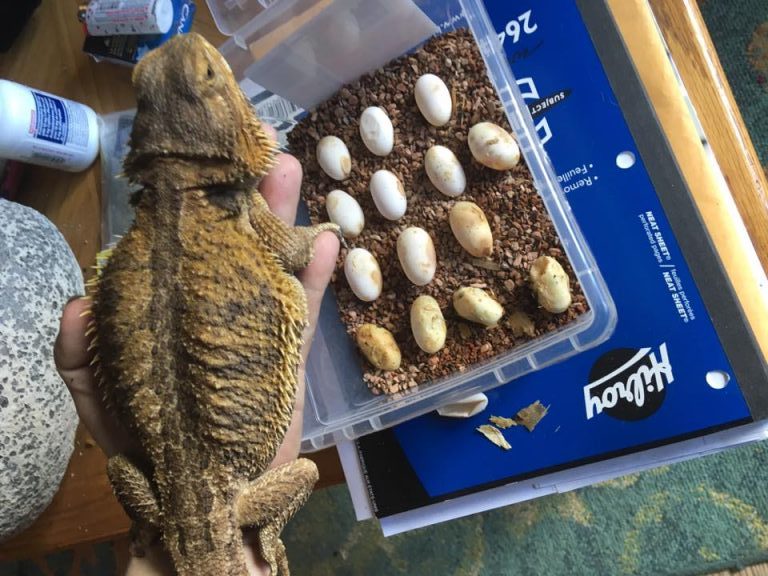
Top Reptile Incubators
Now it’s time to start shopping. We researched extensively to find the best reptile incubators for this article. We hope our selections help you find what you need today.
#1 Zoo Med ReptiBator Digital Reptile Egg Incubator
The digital egg incubator from Zoo Med gives you full control over both temperature and humidity. If you’re serious about breeding reptiles, it’s worth the investment.
The LCD lets you set the interior temperature between 59 and 104°F and the humidity between 10 to 95%. The alarm will warn you if conditions go outside the selected range. Moreover, the memory retained your settings even if the power goes out.
The incubator contains a 55 W heating element to keep the eggs at a constant temperature. There are also multiple water reservoirs in the base to maintain humidity.
You can keep an eye on the eggs with a glance through the transparent cover. The incubator itself is compact, measuring 18.5 x 18.5 x 9.5-inches. It fits nicely on a tabletop.
#2 Exo Terra PT2445 Reptile Egg Incubator
Exo Terra’s incubator is made for pro breeders. It features digital temperature control between 36 to 140°F including both cooling and heating. In this way, you can avoid unexpected temperature extremes.
To manage humidity, add water to the slide-out tray in the bottom or place an extra container inside with water, too. But although the LED display reveals the temperature, it doesn’t show the relative humidity. You’ll want to add a hygrometer for this purpose or use the analog one that they include in the box.
The interior of the incubator has a light that you can turn on and off to check on the eggs. The front window allows you to view the two adjustable shelves inside. Furthermore, Exo Terra includes a bag of vermiculite and two incubation containers.
#3 Happybuy 23L Reptile Incubator ReptiPro 6000
The Happybuy reptile incubator is similar to but less expensive than some other brands. It maintains any temperature you set between 59° and 104°F. It has two compartments with slidable shelves and room at the bottom to place a container of water if needed. The large front window and digital display allow you to keep watch over the eggs. But you’ll need to purchase a separate hygrometer to control humidity.
#4 Farm Innovators 2350 Digital Still Air Reptile Incubator
Farm Innovators’ incubator may be the easiest for new breeders to use. That’s because you don’t need to buy additional equipment to monitor the temperature or humidity. It comes with an Incutek heater that is preset to 85°F, but you can adjust it to suit your needs. If the internal environment surpasses 90°F, you will see the high-temperature notification light.
The digital display reveals the humidity, the temperature, and they days to hatch countdown timer. There is a large window in the lid of the polystyrene foam body of the incubator so you can check on the eggs. All you need to do is add containers for the eggs, a substrate, and water.
#5 Hova-Bator Still Air Egg Incubator Kit for Reptiles by G.Q.F. Manufacturing
Hova-Bator is known for their poultry egg incubators. But they also make this still air kit for incubating reptile eggs. It includes a digital hygrometer and thermometer, a wafer snap thermostat, reptile hatching substrate, and cups to hold the eggs. The design can manage up to 50 eggs depending on their size, but it measures 7.5 x 18 x 18 inches.
It works by warming air with a radiant heat tube. The warm air flows from the bottom upward through the exhaust vents in the top. To adjust humidity, pull out or replace the plugs. You can peer inside through the transparent windows in the lid.
#6 Little Giant 9300 Still Air Egg Incubator Kit for Reptiles
The Little Giant incubator kit resembles the one from Hova-Bator. Both are still air models that should be placed where room air stays between 65 and 72°F. Then the 40 W radiant tube at the bottom is able to maintain the internal temperature. The warm air circulates through the box and out the vents in the top. Meanwhile, the LCD reveals the temperature inside and allows you to adjust the thermostat.
The moisture rings at the bottom make it straightforward to add water and maintain humidity. While you can wash the plastic mesh screen that holds the eggs, it’s a little harder to clean the body of the incubator. It’s made of Styrofoam which keeps it lightweight and less expensive than other options.
#7 OMEM Reptile Hatchery Box
If you prefer a simple setup for incubating eggs, try this breeding box. It’s a food-grade plastic container with an insert to hold a maximum of 14 eggs. The insert keeps the eggs from touching the substrate and provides maximum air circulation.
#8 OMEM Reptile Breeding Box
This is a similar type of hatchery box to the one above. It has a round design that holds up to eight eggs. The lattice insert suspends them above the substrate. One customer reported placing it inside the gecko’s habitat to keep it warm. Then the gecko mother was able to watch over her eggs.
#9 OMEM Reptile Lizard Incubation Box
The main improvement between this hatchery box and the other two above is that it comes with a thermometer. There’s room for 12 eggs, too.
#10 Jumbl Clear Egg Incubator
This incubation box is a little more elaborate than the other three above. The incubator tray has a slot in the middle specifically for the included thermometer.
Recommended incubation temperatures and humidity
If you’re ready to breed reptiles, you may already know the best temperature and humidity for the species you want to raise. But if you’re curious, here are guidelines for species that are often kept as pets.
| Ball python | 85 to 88°F | 85 to 95% humidity |
| Bearded dragon | 84 to 88°F | 60 to 80% |
| Corn snake | 83 to 85°F | 60 to 80% |
| Crested gecko | 72 to 82°F | 60 to 80% |
| Leopard gecko | 82 to 88°F | 60 to 80% |
| Veiled chameleon | 82 to 88°F | 60 to 80% |
As you can see above, ball pythons require high humidity and expert temperature control. Other species of female pythons that brood their own eggs are able to keep them warm, but can’t cool them off if the temperature goes too high.
Lizards like geckos tend to be easier for beginners to breed because their requirements are less demanding.
Which is the best reptile egg incubator?
The right incubator depends on the species. Geckos may hatch perfectly in a simple plastic container on a countertop in the summertime with damp vermiculite or sphagnum moss at the bottom. But beardies and snakes need tighter temperature control.
As you shop for an incubator, think about the ideal conditions you want to create. Would you prefer to have digital control over the temperature? How about an alarm if the environment becomes unsuitable?
Also, how much do you need to fine-tune the humidity? Will a tray of water underneath be sufficient, or will you need to mist the eggs each day?
Some inexperienced reptile breeders may try to repurpose a poultry incubator. This is possible if you’re willing to make modifications. One major difference is that you don’t need to turn reptile eggs.
Finally, remember that when the eggs hatch, you’ll have live reptiles on the loose. Keep a close eye on your incubator if it has ventilation holes large enough that they can use to escape.
Conclusion
If you’re about to start a new adventure in reptile husbandry, we wish you the best of luck. There are few things as cute as baby geckos emerging from their eggs. Get one of the top reptile incubators so that you’re familiar with how to use it and prepared for the journey.
